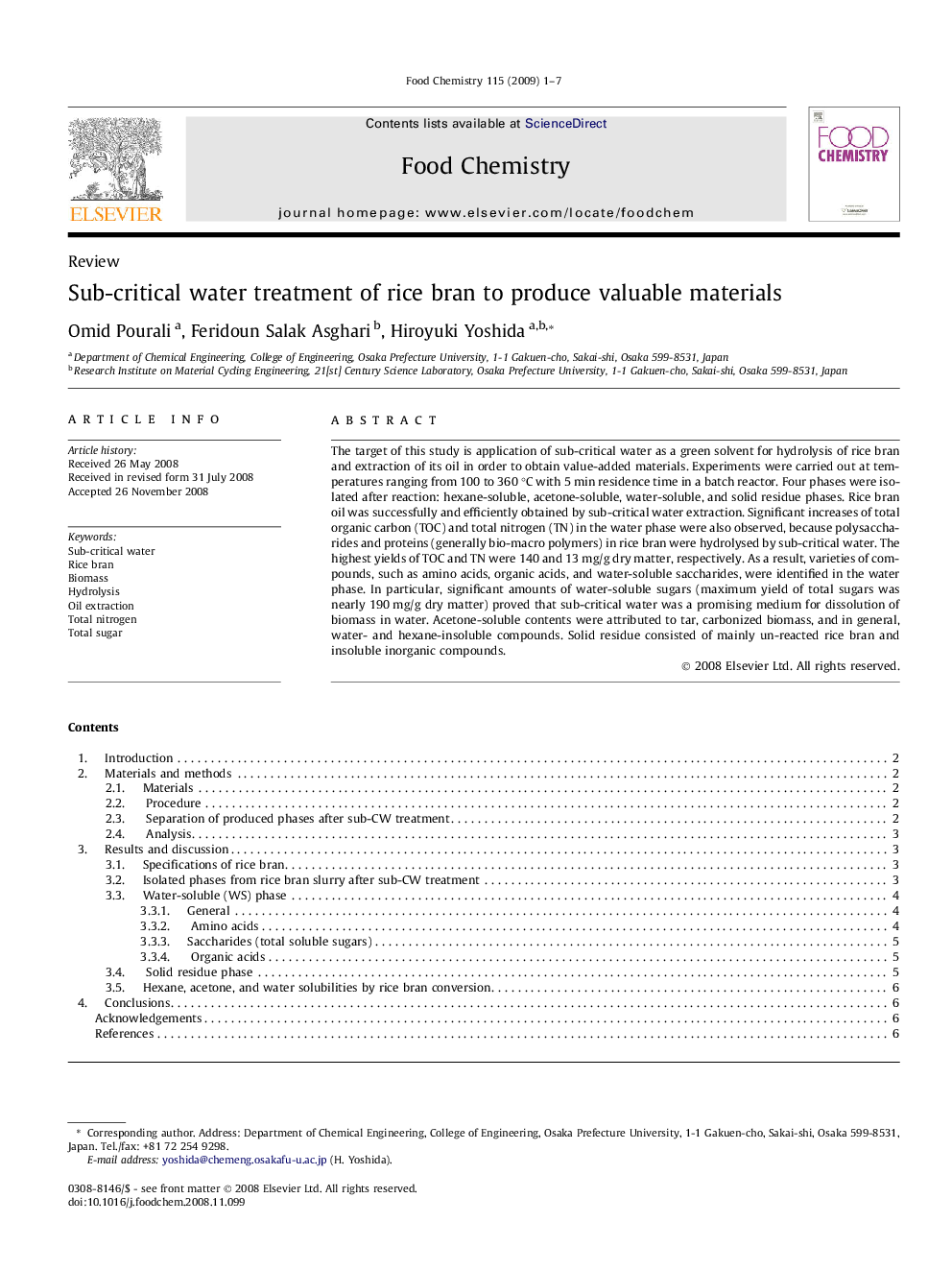| Article ID | Journal | Published Year | Pages | File Type |
|---|---|---|---|---|
| 1188603 | Food Chemistry | 2009 | 7 Pages |
The target of this study is application of sub-critical water as a green solvent for hydrolysis of rice bran and extraction of its oil in order to obtain value-added materials. Experiments were carried out at temperatures ranging from 100 to 360 °C with 5 min residence time in a batch reactor. Four phases were isolated after reaction: hexane-soluble, acetone-soluble, water-soluble, and solid residue phases. Rice bran oil was successfully and efficiently obtained by sub-critical water extraction. Significant increases of total organic carbon (TOC) and total nitrogen (TN) in the water phase were also observed, because polysaccharides and proteins (generally bio-macro polymers) in rice bran were hydrolysed by sub-critical water. The highest yields of TOC and TN were 140 and 13 mg/g dry matter, respectively. As a result, varieties of compounds, such as amino acids, organic acids, and water-soluble saccharides, were identified in the water phase. In particular, significant amounts of water-soluble sugars (maximum yield of total sugars was nearly 190 mg/g dry matter) proved that sub-critical water was a promising medium for dissolution of biomass in water. Acetone-soluble contents were attributed to tar, carbonized biomass, and in general, water- and hexane-insoluble compounds. Solid residue consisted of mainly un-reacted rice bran and insoluble inorganic compounds.
